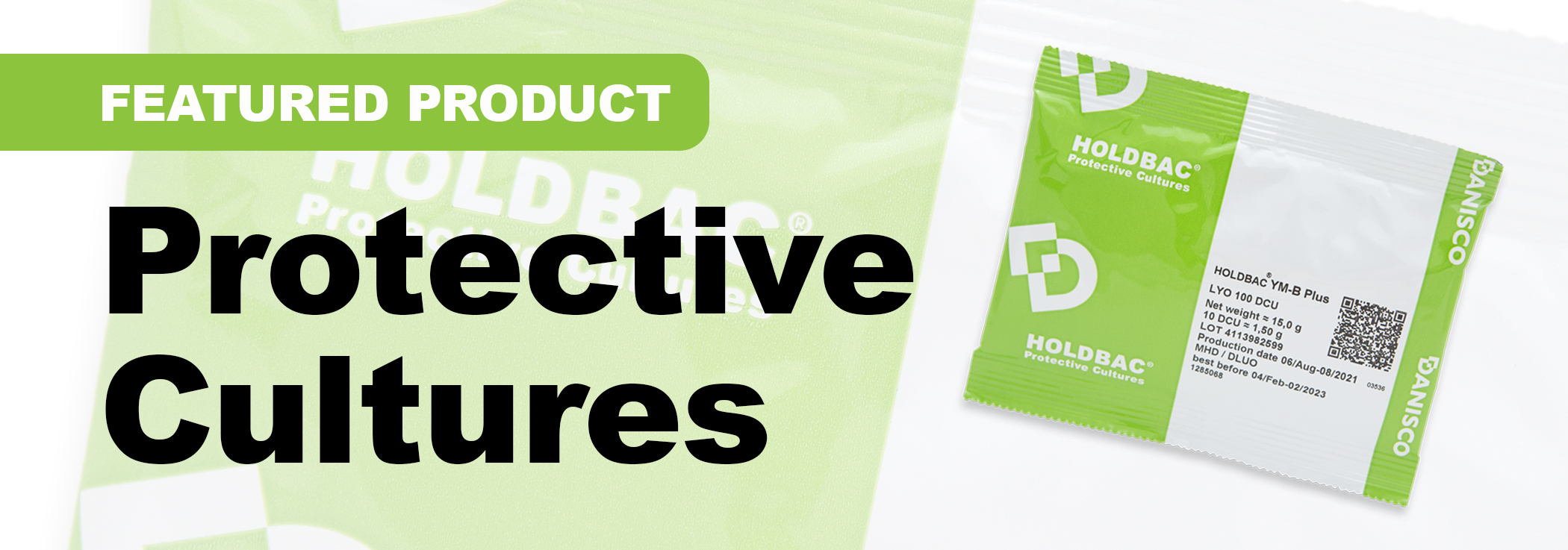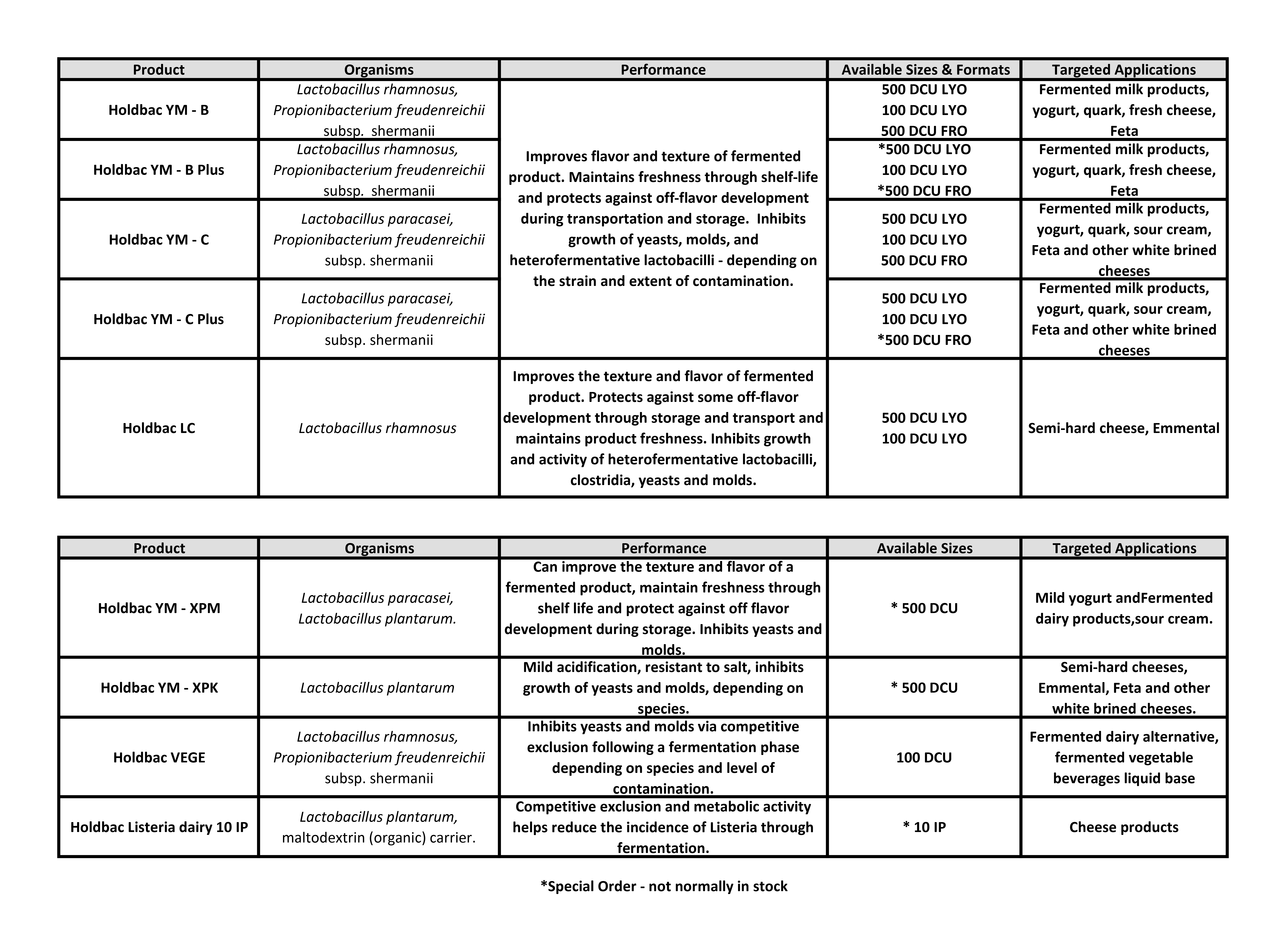Featured Product: Bioprotective Cultures

By: Bill Rufenacht | Technical Specialist, Dairy Connection Inc.
Let’s take a look at bioprotective cultures. These are a group of cultures that can be added to a fermentation along with starter cultures, with the purpose of preventing the growth of spoilage or other undesirable organisms, as well as contributing positive attributes to your finished product. They are designed not to impact the acidification rate of your fermentation or make any pronounced flavor contributions to your product.
Wait -- tell me again, what are bioprotective cultures?
Bioprotective cultures are a group of freeze-dried or frozen cultures that produce antimicrobial compounds and acids that inhibit certain yeasts, molds, and targeted bacteria. The bacteria in bioprotective cultures have been selected -- and the cultures designed specifically for -- this purpose. They have been designed not to contribute to acidification to any measurable degree. They should be added with your starter cultures because they need time to multiply and produce the metabolites that inhibit the growth of targeted organisms. Danisco’s series of bioprotective cultures are sold under the Holdbac® label.
Will Holdbac® cultures eliminate all undesirable growth?
Unfortunately, these cultures are not a cure-all for any yeast, mold, or heterofermentative lactobacilli (cause of late gas) issues you may be having with your products. The metabolites that are produced by these cultures are considered fungistatic or bacteriostatic, not fungicidal or bactericidal. This means the compounds produced by Holdbac® cultures will inhibit growth or keep targeted organisms from multiplying but will not kill them. The result is that bioprotective cultures can be overwhelmed by high numbers of undesirable organisms.
If they might not do the job, why use them?
Eliminating spoilage organisms from your products requires your attention on multiple fronts: air filtration and handling, traffic control through your facility, captive shoe and clothing programs, cleaning and sanitation programs, and employee GMPs. Bioprotective cultures can be an important part of an effective program to control yeasts, molds, and some unwanted bacteria. You can review the table that follows to see what organisms the various Holdbac® cultures can inhibit. Holdbac® cultures have also been shown to improve texture and flavor, protect against off-flavor development, in addition to inhibiting unwanted organisms.
Labeling considerations
Another benefit of bioprotective cultures is that with a cultured dairy product, the antimicrobial benefit becomes invisible on your ingredient statement. Your ingredient statement likely already includes “cultures,” and the addition of a bioprotective culture to your make does not require any additions to that ingredient statement. Danisco makes another product, Natamax®, which contains natamycin. Natamycin is a natural metabolite of the bacteria Streptomyces natalensis. Natamycin was discovered by DSM scientists in 1954 in a soil sample from Africa and brought to market in 1967. I have seen that natamycin is remarkably effective at eliminating mold in dairy products. Natamycin is fungicidal, killing yeasts and mold by blocking the transport of nutrients through the cell wall. Natamycin must be included on an ingredient statement, and several large retailers have chosen not to allow its use in the products they sell. When properly applied, natamycin is extremely effective. The strength of natamycin is that it is effective against all yeast and mold species, whereas bioprotective cultures are effective against some – not all.
Do all culture manufacturers produce bioprotective cultures?
Many manufacturers have created a line of bioprotective cultures. At Dairy Connection, we are most familiar with the Holdbac® line of products from IFF - Danisco. We also stock a selection of Chr. Hansen’s FreshQ® line of bioprotective cultures, and have been investigating bioprotective cultures from Lallemand and SACCO.
What’s the deal with Holdbac® YM Plus cultures?
In 2014, Danisco released Holdbac® YM-B Plus and YM-C Plus. Suggested inoculation rates for the Plus cultures are the same as the original Holdbac® YM cultures, and cost is similar. The Plus cultures were released as an improvement to the original Holdbac® YM cultures in that they are effective in controlling a broader spectrum of spoilage organisms – or a greater number of yeast and mold species. They are also purported to maintain benefits given mild temperature abuse to products (up to 10C or 50F). Please do not test this claim. Cold chain maintenance is important. Keep your dairy products under 40 degrees Fahrenheit, please. We have many customers using the "original" Holdbac® cultures who are satisfied with their performance. We have been suggesting that new users select the Plus version due to their broader spectrum of affected spoilage organisms.
Are bioprotective cultures really a good idea for me?
If you are having issues with yeast growth, mold growth, or late gas appearing in your products, bioprotective cultures may be worth your consideration. My opinion – and not my best sales pitch – is that you should investigate the source of your problem and eliminate that first. As mentioned previously, review the air filtration and handling, employee and product traffic patterns, shoe and clothing programs, and cleaning/sanitation programs in your plant first. Investigate potential sources of contaminants and eliminate them where possible. Mold spores travel easily through air, on clothing or other materials like cardboard, pallets, or equipment. Eliminating yeast and mold requires sound programs and constant awareness. Eliminating these contaminants from your products requires a multi-pronged approach. Bioprotective cultures can play a significant role.
Holdbac® culture line
What follows is a table summarizing the Holdbac® series of cultures, many of which we stock. As always, we are happy to answer any questions you may have regarding the use of these products. Please feel free to contact us with questions.

Recent Blog Posts
-
New Cheese Coating Supply Now Available
By: Bill Rufenacht | Technical Specialist, Dairy Connection Inc.If you use cheese-coating as part o …5th Sep 2024 -
Featured Product: YoMix© ABY-2C Yogurt Culture
By: Bill Rufenacht | Technical Specialist, Dairy Connection Inc.YoMix© ABY-2C is a yogurt …2nd Apr 2024 -
Featured Product: Bioprotective Cultures
By: Bill Rufenacht | Technical Specialist, Dairy Connection Inc.Let’s take a look at bioprotective …15th Feb 2024